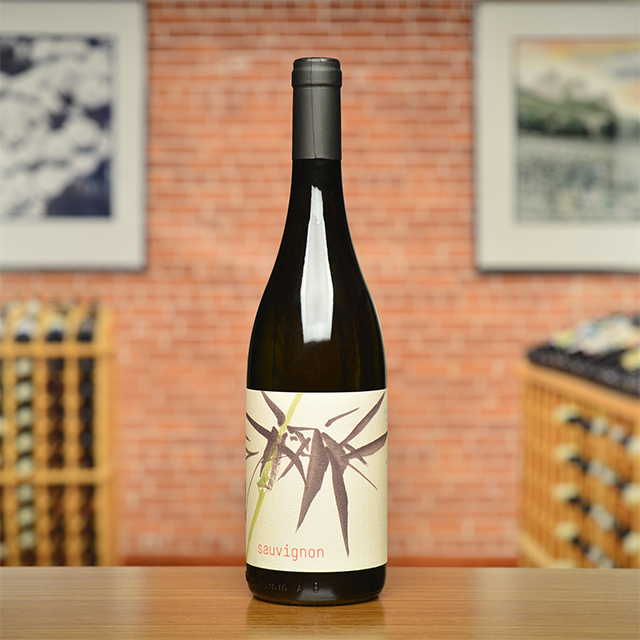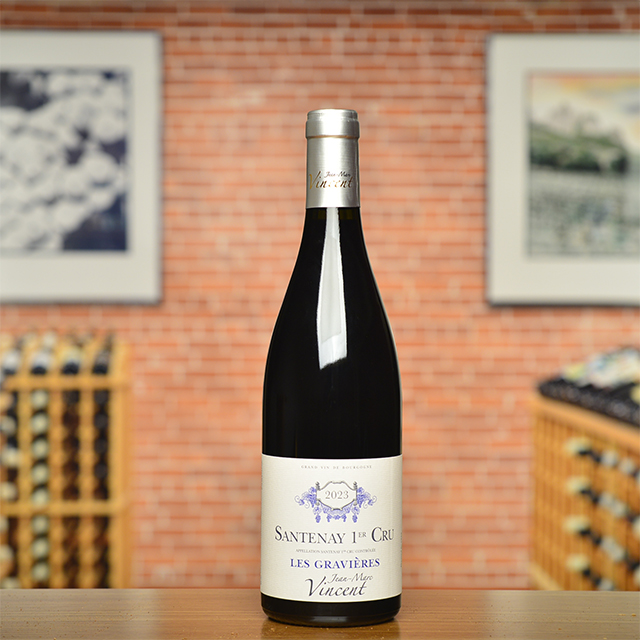Notify me
2018 Venezia Giulia Vitovska
Edi Kante
I am amazed at and in awe of Vitovska, an indigenous grape that tastes inextricably linked to its environment in the most authentic way. The grapes, grown in the Carso district of Italy near Trieste, between mountains (the Alps) and sea (the Adriatic), marry the identities of these climatic forces effortlessly. One sip brought to mind the pure, breezy whites I love from other Alpine regions like Savoie and Alto Adige, as well as the warm, salty air you can taste in Mediterranean whites from Corsica and Cassis. If any of these qualities appeal to you, you’re in for a treat with Kante’s Vitovska.
| Wine Type: | white |
| Vintage: | 2018 |
| Bottle Size: | 750mL |
| Blend: | Vitovska |
| Appellation: | Venezia Giulia |
| Country: | Italy |
| Region: | Friuli |
| Producer: | Edi Kante |
| Winemaker: | Edi Kante |
| Vineyard: | 8 years average |
| Soil: | Clay and Limestone |
| Aging: | Aged for 12 months in old barrels, then aged for 6 more months in stainless steel tank, and in bottle for 7 years |
| Farming: | Sustainable |
| Alcohol: | 12% |
More from this Producer or Region

2020 Friuli Colli Orientali Refosco Peduncolo Rosso “Morus Nigra”
Italy | Friuli
Lovely now with a slight chill, their Refosco has a stimulating, stony backbone that ensures a slow evolution through the years.

2023 Chardonnay “Ronco Pitotti”
Italy | Friuli
First class depth and complexity on par with village level White Burgundy, but with a Friulian slant. Zingy adicity with citrus and apple notes.

2016 Venezia Giulia Malvasia “Selezione”
Italy | Friuli
Aged eight years before release, the wine is textured, vibrant, and delightfully decadent.

2022 Venezia Giulia Bianco “Morus Alba”
Italy | Friuli
Richly textured and built to age, it is the ultimate match for a seafood risotto.

2009 Delle Venezie Malvasia “Malvatea”
Italy | Friuli
A sublime late harvest of Malvasia that is sumptuously delightful with a perfectly tart bite.

2018 Refosco dal Peduncolo Rosso “Morus Nigra”
Italy | Friuli
Lovely now with a slight chill, their Refosco has a stimulating, stony backbone that ensures a slow evolution through the years.

2022 Venezia Giulia Friulano “La Duline”
Italy | Friuli
Sumptuous, yet bone dry with a stony finish. It’s just easy to love.

2019 Venezia Giulia Gialloditocai MAGNUM
Italy | Friuli
When I asked winemaker Lorenzo Mocchiutti why he only bottles this wine in magnum, he said it is because it is so delicious a regular-size bottle is just not enough.

2019 Venezia Giulia Bianco “Morus Alba”
Italy | Friuli
This gives it a mesmerizing, Meursault-like tension between fuller body and almost creamy texture on one hand and high-acid, citrusy flavors on the other.

2020 Friuli Colli Orientali Sauvignon “Ronco Pitotti”
Italy | Friuli
This bianco surprises from the very beginning to the last sip, with aromas of quince and salted butter and a long, lingering finish of toasted almond.
About The Producer
Edi Kante
About The Region
Friuli

Friuli may be forever tied to its bland, acidic Pinot Grigios, which at one point saturated the export market, but a deeper look reveals a captivating array of unique grape-growing sites, distinctive indigenous varieties, and passionate small growers keen on preserving a rich tradition of winemaking.
Here in Italy’s northeast corner, the region is shared between the Julian Alps in the north and plains leading to the Adriatic Sea in the south, bound by the Veneto to the west and Slovenia to the east. While it is one of the wettest regions of Italy—and all of Europe, for that matter—Friuli benefits from the push-and-pull of cool air currents from the mountains meeting warmer breezes from the Adriatic. A crescent-shaped slice of foothills, where both play a role, tends to produce the region’s finest wines.
Nothing is more emblematic to Friulian wine than a crisp, peachy Ribolla Gialla served with thinly sliced prosciutto San Daniele, a local specialty. And yet, this only begins to tell the story: high-acid, mineral-driven whites from a number of local varieties including Tocai Friulano, Pinot Grigio, and Malvasia range from light and crisp to powerful and age-worthy, complementing Adriatic shellfish, hearty mountain cheeses, and everything in between. Native reds like Schioppettino, Terrano, and Refosco all have something unique to say, while there has even been significant success with French varieties like Sauvignon, Chardonnay, and Merlot, all long established in the region.
Friuli’s diversity is its strength, and it keeps us coming back for more. In fact, Kermit imported one of the region’s first organic growers toward the start of his career; our more recent collaboration with producers like Vignai da Duline is a testament to the enormous potential when devoted artisans put their hearts into Friuli’s fascinating terroir.
More from Friuli or Italy
2024 Pigato “Vigneto Ca da Rena”
Punta Crena Italy | Liguria
2018 Refosco dal Peduncolo Rosso “Morus Nigra”
Vignai da Duline Italy | Friuli
2009 Delle Venezie Malvasia “Malvatea”
Vignai da Duline Italy | Friuli
2018 Brunello di Montalcino
Sesti Italy | Tuscany
2019 Venezia Giulia Bianco “Morus Alba”
Vignai da Duline Italy | Friuli
2020 Friuli Colli Orientali Sauvignon “Ronco Pitotti”
Vignai da Duline Italy | Friuli
2016 Venezia Giulia Malvasia “Selezione”
Kante Italy | Friuli
2022 Venezia Giulia Friulano “La Duline”
Vignai da Duline Italy | Friuli
2022 Venezia Giulia Bianco “Morus Alba”
Vignai da Duline Italy | Friuli
2019 Venezia Giulia Gialloditocai MAGNUM
Vignai da Duline Italy | Friuli
2020 Friuli Colli Orientali Refosco Peduncolo Rosso “Morus Nigra”
Vignai da Duline Italy | Friuli
2023 Chardonnay “Ronco Pitotti”
Vignai da Duline Italy | Friuli
2024 Pigato “Vigneto Ca da Rena”
Punta Crena Italy | Liguria
2018 Refosco dal Peduncolo Rosso “Morus Nigra”
Vignai da Duline Italy | Friuli
2009 Delle Venezie Malvasia “Malvatea”
Vignai da Duline Italy | Friuli
2018 Brunello di Montalcino
Sesti Italy | Tuscany
2019 Venezia Giulia Bianco “Morus Alba”
Vignai da Duline Italy | Friuli
2020 Friuli Colli Orientali Sauvignon “Ronco Pitotti”
Vignai da Duline Italy | Friuli
2016 Venezia Giulia Malvasia “Selezione”
Kante Italy | Friuli
2022 Venezia Giulia Friulano “La Duline”
Vignai da Duline Italy | Friuli
2022 Venezia Giulia Bianco “Morus Alba”
Vignai da Duline Italy | Friuli
2019 Venezia Giulia Gialloditocai MAGNUM
Vignai da Duline Italy | Friuli
2020 Friuli Colli Orientali Refosco Peduncolo Rosso “Morus Nigra”
Vignai da Duline Italy | Friuli
2023 Chardonnay “Ronco Pitotti”
Vignai da Duline Italy | Friuli
Vintage Chart Mentality

Vintage Chart Mentality
Trust the great winemakers, trust the great vineyards. Your wine merchant might even be trustworthy. In the long run, that vintage strip may be the least important guide to quality on your bottle of wine.—Kermit Lynch
















